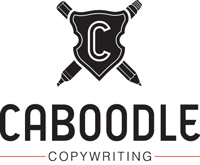As a copywriter and creative, I have a very particular set of skills, but I don’t think I’m precious about my work. I try not to be. It’s just words, after all, and there are an almost infinite number of ways to construct a headline, structure a paragraph, tell a story or make an idea come to life.
But here’s my but. And like all the best buts, it’s a big but.
If one more designer inserts an ampersand into one of my sentences, I’m going medieval.
Just to be clear, I love designers
I have a lot of time for designers and art directors. I wanted to be one, but it turned out that I’m better at words and ideas than the art of making those words and ideas look good.
If a designer needs me to trim a word or two to lose a widow, or break the river running through a paragraph, or if they just want me to ‘Make the bloody copy shorter’, then I’ll do whatever I can.
Increasingly though, designers seem less interested in making copy look elegant. And the relatively recent phenomenon of switching ‘&’ for ‘and’ is a case in point.
Why do designers like using ampersands?
I don’t know. I can’t think of a single good reason.
I guess an ampersand is two characters shorter. And in an era when 280 characters is considered a novel and icons and emojis are so ubiquitous, maybe younger designers don’t see a problem with it.
But if your goal is to make your copy easy to scan and your ideas as easy to grasp as possible, there is a problem with using an ampersand instead of ‘and’.
Why designers should stop using ‘&’ instead of ‘and’
As a failed designer, I don’t profess to know everything about good design and typography, but there’s a reason we use sentence case. Sentence case is easy for our eyes to scan.
With sentence case, your eye flows over characters and words the way a Formula One car glides from apex to apex around a track.
With no unnecessary capitals or symbols getting in the way (cue another rant about the gratuitous use of title case) the path from word to meaning to message to understanding is instantaneous.
You can even cover up the top or bottom half of a sentence-case sentence and still scan and understand it. Try it. Those ascenders and descenders are there for a reason.
But when you plonk an ampersand in the middle of a sentence, it’s the typographic equivalent of placing an unexpected and unnecessary speed bump in your eye’s path.
Your eye runs over it, but it jars you momentarily. It takes a fraction of a second to get back on track and up to speed, and every fraction of a second counts, especially if you’re reading on a screen.
And let’s be honest, on a purely aesthetic level it’s plain ugly!
So, unless it’s in a title or name of some kind (something that requires initial caps) stop using ampersands willy nilly.
Otherwise, I’m coming after you. And you don’t want to know where I’ll stick your ampersand.
If you like passive-aggressive blog posts, be sure to keep an eye on our copywriting blog. Alternatively, see if you can spot any COMPLETELY UNNECESSARY ampersands in our copywriting portfolio.
